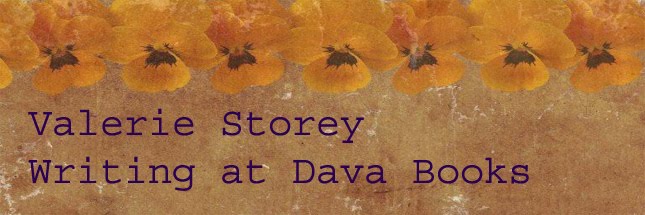Guest Author, Holly Schindler!
And her beautiful new book:
The Junction of Sunshine and Lucky
The Junction of Sunshine and Lucky
Wow--exciting news today! We've got guest author, Holly Schindler, stopping by on her 2014 Blog Tour for The Junction of Sunshine and Lucky. You may recall Holly has visited before with a great post about writing for Young Adults where she discussed "Crying at the Movies." I'm delighted to have her back.
The Junction of Sunshine and Lucky is Holly's first book for middle grade readers, and just like her other books, the writing is sheer poetry, totally unforgettable. I started reading a few nights ago and couldn't stop--in fact, I had to bring the book to my day job so I could keep reading during lunch!
Published in hardcover by Dial Books, Penguin Group, and due out on February 6, 2014, the book is described as:
“Beasts of the Southern Wild” meets Because of Winn Dixie
in this inspiring story of hope.
Auggie Jones lives with her grandpa Gus, a trash hauler, in a poor part of town. So when her wealthy classmate’s father starts the House Beautification Committee, it’s homes like Auggie’s that are deemed “in violation.” But Auggie is determined to prove that there’s more to her—and to her house—than meets the eye.
What starts out as a home renovation project quickly becomes much more as Auggie and her grandpa discover a talent they never knew they had—and redefine a whole town’s perception of beauty, one recycled sculpture at a time.
Holly Schindler’s feel-good story about the power one voice can have will inspire readers to speak from their hearts.
And from the reviewers:
"...a heartwarming and
uplifting story...[that] shines...with vibrant themes of community,
self-empowerment and artistic vision delivered with a satisfying verve."
– Kirkus Reviews
"Axioms like 'One man's trash
is another man's treasure' and 'Beauty is in the eye of the beholder' come
gracefully to life in Schindler's tale about the value of hard work and the
power of community…Auggie's enthusiasm and unbridled creativity are infectious,
and like minded readers will envy her creative partnership with [her grandfather]
Gus."
– Publishers Weekly
For her visit today, I asked Holly to share some tips about writing for the middle grades. Here's what she has to say:
Top 12 Tips for
Writing MG
1. Reconnect with
your own childhood voice. Dig through
anything you or your parents might have saved from your younger years: school
papers, a diary, even home movies.
Remember who you were then—your fears, your dreams. It’ll help you craft an appropriate voice for
your MG character.
2. Interact with
today’s middle school kids. I got to do
that by teaching music lessons while working on my earliest manuscripts. But you could also do this by tutoring,
working at a library, or even getting better acquainted with the younger
members of your family or your own neighborhood.
3. Read
CONTEMPORARY middle grade novels. I
guarantee that if you rely on your memories of your favorite childhood books,
editors will use the term “old-fashioned” to describe your submissions.
4. Also, watch some
contemporary movies or TV shows for kids.
This is especially helpful in getting a feel for contemporary topics AND
it will give you some idea of what your own child characters should look /
dress like.
5. Don’t write
“down.” Kids can smell that a mile
away. Respect your readers’
intelligence. It’ll come through in your
writing.
6. Don’t
underestimate the power of humor, especially among the middle school crowd.
7. Do create characters
that readers can admire.
8. Watch your
pacing—a middle grade novel has roughly one fourth the space of an adult
novel.
9. Consider getting
a young reader to give you early feedback.
10. Put your middle
school voice aside when writing your pitch.
Approach potential editors or agents in a professional manner. (They’ll get a glimpse of your MG voice in
sample chapters; a pitch is the place to sell your book.)
11. Befriend your
local children’s librarians—they will be invaluable as you begin to market your
book in your area.
12. Never assume you
know everything about MG—even after you’ve published! Continue to read, to interact with young
people. It’ll help you continue to grow
as an author.
Great advice, Holly--thank you so much for sharing this good information. I think many of these points can be seen here, too, in the trailer for Sunshine:
Great advice, Holly--thank you so much for sharing this good information. I think many of these points can be seen here, too, in the trailer for Sunshine:
Tip of the Day: Keep following Holly's tour! Next stop is tomorrow, January 29, 2014: http://www.muchlovedbooks.blogspot.co.uk/
Some final notes and links from Holly:
Site
for young readers: Holly Schindler’s Middles hollyschindlermiddles.weebly.com. I’m especially excited about this site. I adored getting to interact with the YA
readership online—usually through Twitter or FB. But I had to create a site where I could
interact with the MG readership. I’m
devoting a page on the site to reviews from young readers themselves! Be sure to send your young reader’s review
through the Contact Me page.
Group Author Blogs: YA
Outside the Lines (yaoutsidethelines.blogspot.com) for YA authors and Smack Dab
in the Middle (smack-dab-in-the-middle.blogspot.com) for MG authors.
To further contact/follow Holly: Twitter: @holly_schindler
Facebook: facebook.com/HollySchindlerAuthor
Website: Hollyschindler.com
Thanks again, Holly; we wish you much success with your tour and
the publication of The Junction of Sunshine and Lucky!





